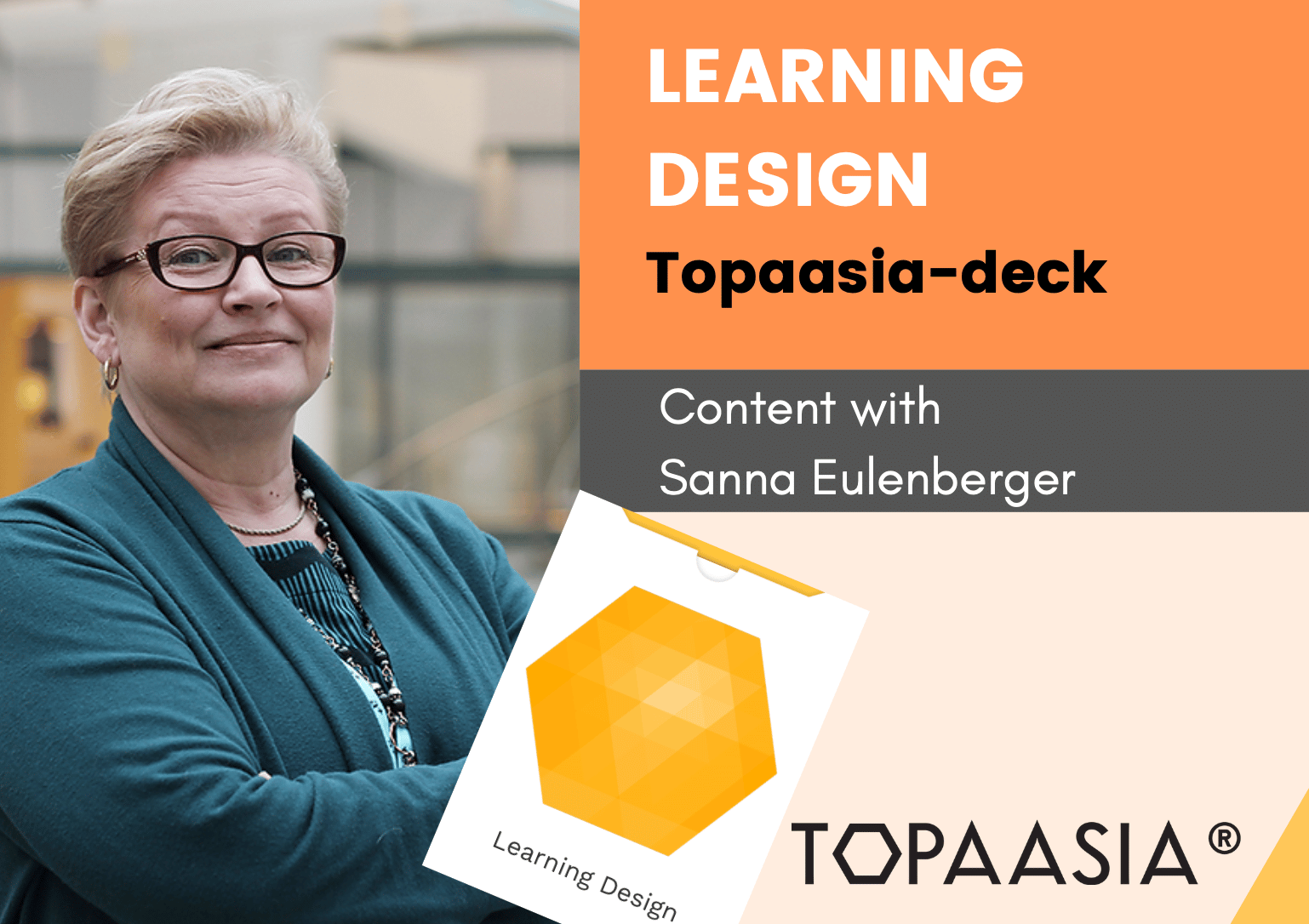
Who are you?
I am Sanna Eulenberger and I design, facilitate and coach as my day job. In the evening, I am a non-fiction writer and a part-time entrepreneur. I have written the book Vapaalla tyylillä taitajaksi (rough translation: Freestyling to mastery) – and I have created the content of the Learning Design Game with Topaasia.
Why did you write the book Freestyling to mastery?
I wrote the book, because we are going through quite a bit of change in working life. As a coach, I meet a lot of people who are thinking about what to do with their future and especially what kind of skills they should learn for future work. Many are lost with it. I wanted to make a practical book that encourages individual learning and refreshing learning in everyday life.
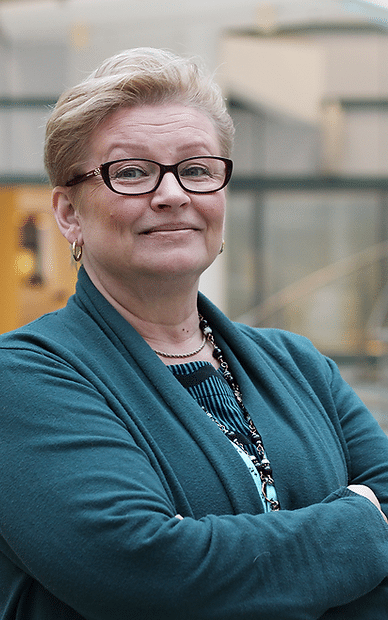
Sanna Eulenberger. Photographer: Otto Salminen
What does learning mean to you? Why is it an interesting topic?
It means two things to me. On the other hand, it’s all about learning skills as working life changes at an accelerating pace and our skills become obsolete faster and faster. We should constantly refresh our skills and expand or deepen our range of skills. Then there is also the life skills perspective, a kind of spiritual growth. This book serves both needs.
What do you think about the constant change?
Work-life is more surprising than ever. We live in an increasingly uncertain, complex and diverse environment. Some streams of change are going really fast. For example, a year people were thrown into remote working, especially information work, and digital skills had to be tuned accordingly.
On the other hand, there are also developments that will not change rapidly over the decades. For example, basic human behavior – after all, we are pretty similar in history to the present day. Even in marketing communications, things that have been talked about since the 1960s are still being repeated. Thus, there are at least two types of change flows: very fast or slow.
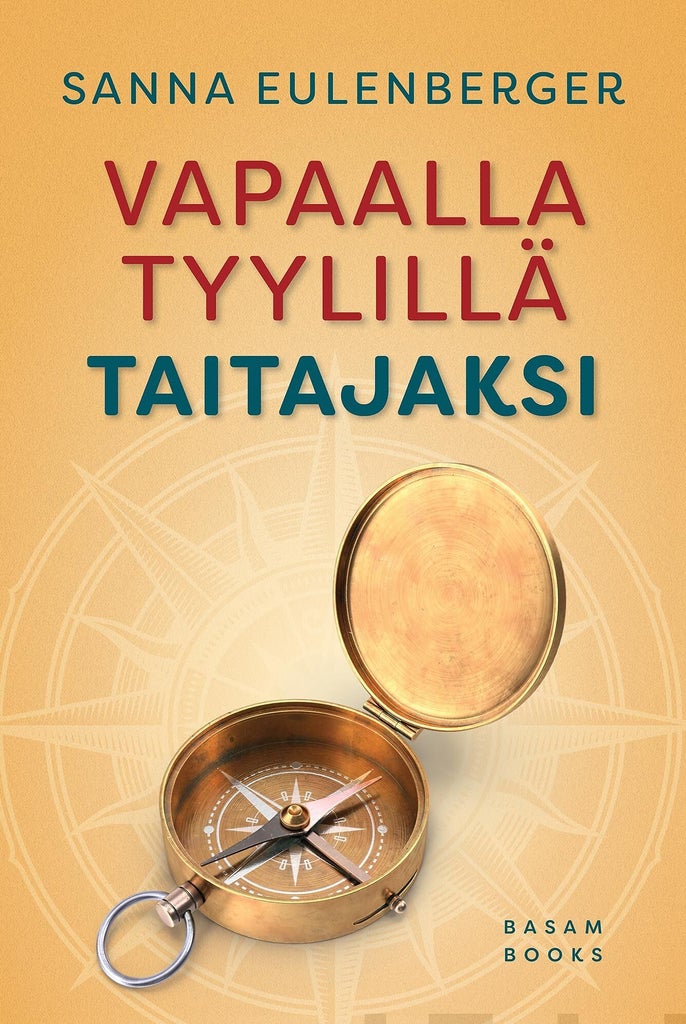
Sanna ‘s new Freestyling to mastery book. The book also includes an interview with Topaasia’s own Jussi Galla. Publisher: Basam Books
What is organizational learning?
Quite a few of us no longer work alone. We usually work either in teams or in different dynamically changing groups. Organizational learning means learning together and sharing knowledge, and they are key success factors if you want to succeed in the future.
Do you see any risks in learning as an organization?
Sure. First is, can we find a common direction for learning? Does every member of the organization value the same things? On the other hand, do we even consider the exact same things to be relevant as the work diversifies. It may be that what is important to one group of the organization is less important to another. Do we accept and know how to take advantage of differentiation and diversity?
Another risk is the failure to share knowledge. Work is becoming increasingly networked. We should therefore look beyond the boundaries of our own organization and build continuous learning together with the entire network of collaboration, and not just within our own organization.
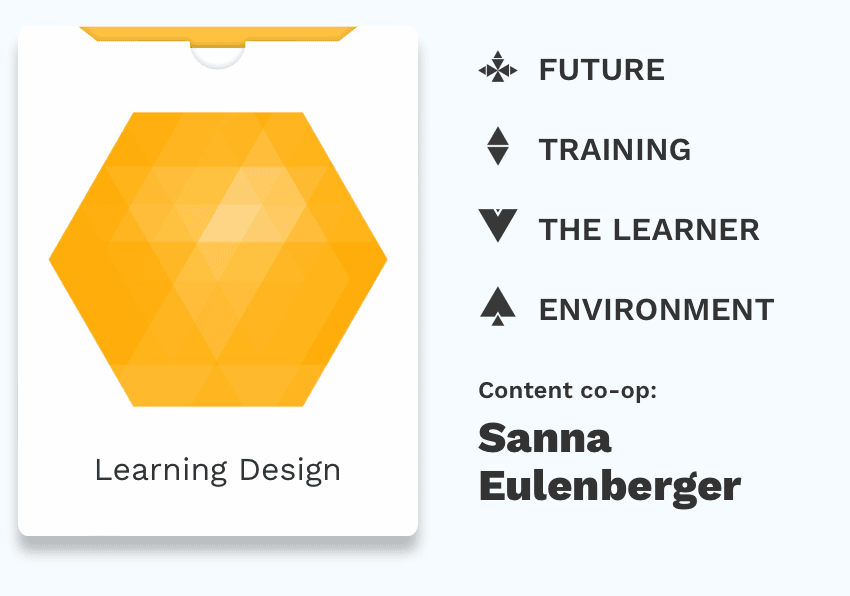
Consider the structure of an learning design game. There are four themes in the game: Environment, Future, Training, and The Learner. Why these?
They come from the concept of my book. It is built on individual learning, but the same concept is equally suitable for community learning.
The Learner – Everyone learns as an individual, although sharing knowledge with others is especially essential in adult learning. However, everything starts with an individual person, so individual factors must also be taken into account when learning together.
Future – It is important for the organization to know where we are looking. What kind of future do we want and what kind of skills does it mean for the organization? Future resilience is essential to an organization, so it must be involved.
Training – Identified key skills need to be practiced and honed for the better. So in addition to learning new you have to refresh learning regularly. We adults are not usually masters right from birth, although we would often like to be one from the beginning as learners. Persevering practice makes perfect.
Environment – I already mentioned networking work. Changes in the operating environment are of great importance in terms of the direction and content of learning, so changes must be taken into account in continuous learning. It can mean, for example, changes in your own organizational structures or decision-making habits. The environment can be the immediate environment, the entire network or an industry. After all, the turbulent reforms in the industry often come from outside the industry, so sounding the environment is an important part of organizational learning.
What is this deck for and for whom?
I see that we have a lot of work to do for systematic, continuous learning building a business model and culture in organizations. The Learning design deck helps to build these elements into the culture. Growth stemming from profound thinking together and the open sharing of know-how are the most important success factors in future working life.
This deck is for anyone who wants to support both of each organization the individual learning of the member and especially the learning together in terms of future skills and organizational success. The deck is also suitable to help thinking for all people who want to grow. I myself often use Topaasia decks to think and question my own thinking.
Use the deck together with management, leaders, teams, and different groups learning and development and forward-looking co-planning. The deck is also suitable for networks and ecosystems to support thinking and stimulate debate in the search for changes in the environment that affect operations.
Are there any favorite cards in the deck? Is there a personal relationship with some cards?
Framework
Yes, there is a personal relationship for every card – the creation of this deck came from the heart!
However, one such thing in particular is the framework, the structures. That in fact, situations and spaces that allow learning together are systematically created in the organization.
I used to work at Satama Interactive as one of the innovation managers. We separately created a space where the team was allowed to go to develop their ideas on a weekly basis. We were allowed to spend some time working on co-development or self-learning and brainstorming to develop services and products. Enabling such activities is really important even today. this card joins the Environment suite : how do we create an environment conducive to growth ?
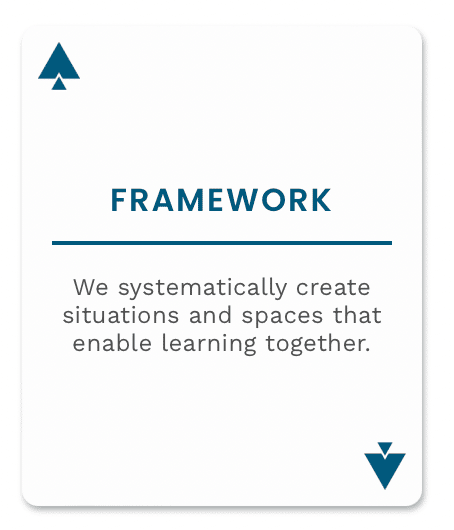
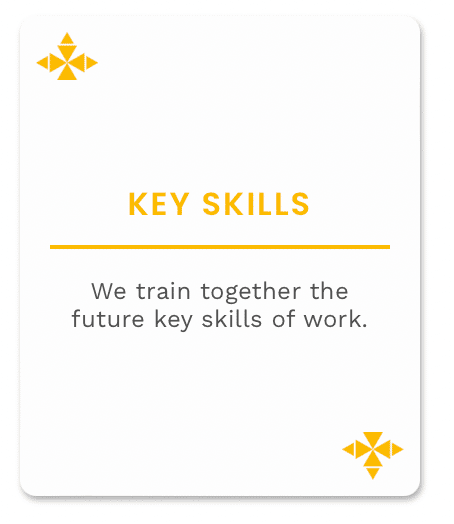
Key skills
If you think about the Future – suite , how many organizations there are that have defined at all, what are the key skills for future work in terms of success? Not to mention that those skills are constantly and systematically practiced and warmed up together.
Both/and thinking
I like both the way of thinking “Both/and”, which is one of the cards in the Practice suite . Let go of the illusion of knowledge and acknowledge that there are usually several different solutions to a problem. It may be that none of those solutions is better than the other. All you have to do is try and choose one of the options and see if it works or not. Then feel free to choose new ones if you went wrong. In any case, lessons have been learned and we’ve become wiser along the way from each experiment.
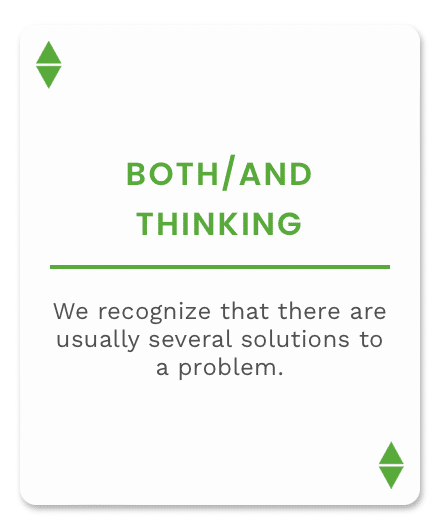
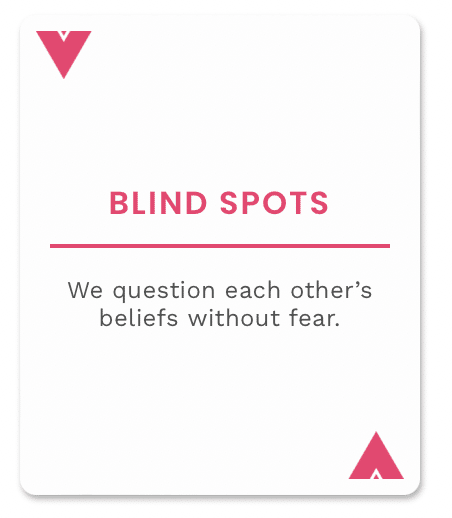
Blind spots
Learner-suite from the point of view of blind spots are interesting. When trust among people is okay, we dare to question another’s beliefs and blind spots. Especially those that inhibit growth. Can’t even believe this Teams are so awkward to me that I never learn these breakout rooms. Do you dare to challenge the obstacles to second growth, no matter how simple and small? Of course, we also help and support others: You see, this way those small group rooms succeed! This is just the kind of little everyday learning together.
Closing remarks?
Feel free to just give it a try! And please give feedback to come for the experiments after what the deck feels like and what kind of thoughts and insights arise.
—-
Thank you Sanna for the interview and content collaboration!
Read more:
